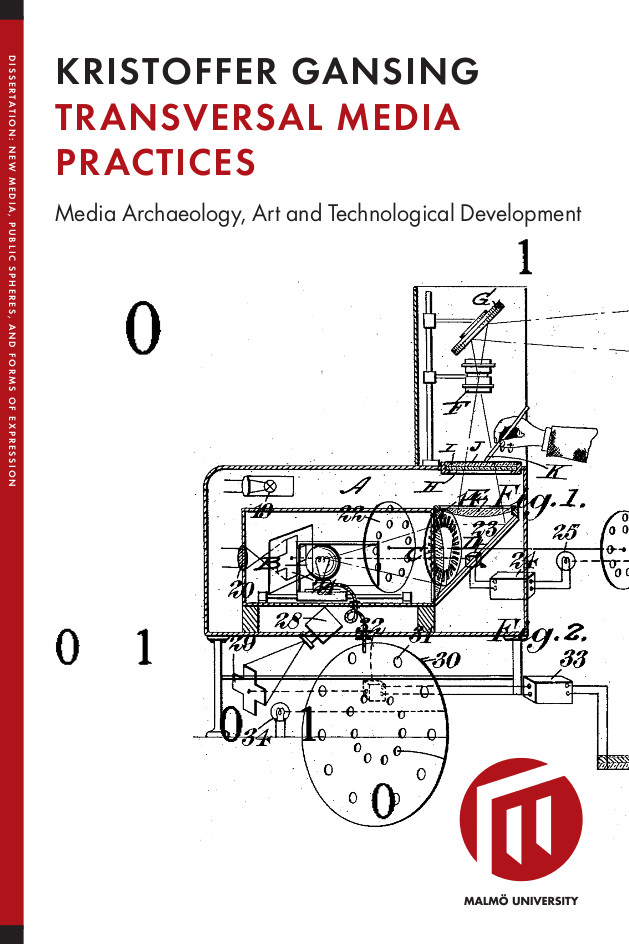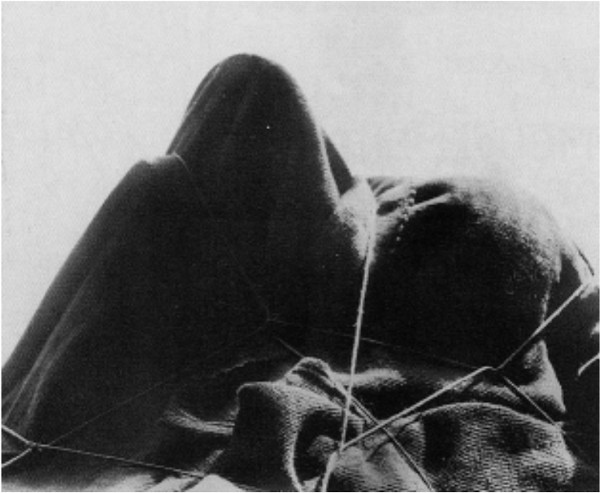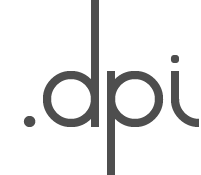Kristoffer Gansing: Transversal Media Practices: Media Archaeology, Art and Technological Development (2013)
Filed under thesis | Tags: · art, artistic research, imagination, media archeology, media art, new media, overhead projector, remediation, technology, television, transversality

Transversal Media Practices work across specific situations of technological development, critically examining and redefining the terms of production in different media by bringing heterogeneous histories, institutions, actors and materialities into play with one another. This dissertation is all about trying out and refining the methodologies of such transversal media practices, in the end outlining a conceptual set of tools for further development.
Following the technological hype of the “digital revolution” of the mid-1990s, the field of new media studies gained popularity over a ten year period. This dissertation takes its cue from a historical turn in new media theory, and argues that it is time leave behind strict polarisations between old and new as well as analogue and digital. The study unfolds through two case-studies. The first, “The World’s Last Television Studio”, looks at tv-tv, an art and media-activist project that negotiates the sociocultural and material changes of the “old” and institutionalised mass medium of television. In the second case study, “The Art of the Overhead”, another old medium is engaged: the overhead projector – a quintessential 20th century institutional medium here presented as a device for rethinking the new through the old. The problematic of technological development, i.e. dealing with questions of how (media) technologies develop over time, forms the background to these two case studies. A key issue being how cultural and artistic practices dealing with the interaction of old and new media invite us to conceptualise technological development in new ways.
The emerging field of media archaeology is employed as a methodology in media studies and cultural production, comprising a theoretical and applied analysis of media history, materiality and practice. This transversal approach allows media archaeologists to deal with the relation between the old and the new in a non-linear way as well as to pay attention to the technical materiality of media. It is argued that the transversality of the media-archaeological approach should be seen in contrast to other conceptions of media history and technological development, such as progressivist, mono-medial and evolutionary ones. In this study, the author tries out the potential of media archaeology to reform our conception of media technologies, and eventually formulates a set of concepts for thinking and doing media archaeology as a transversal media practice. These tools are about the imaginary, residual and renewable dimensions of media technologies and are meant to assist in the opening up and intervening into processes of standardised media development.
On a general level the resulting set of tools for transversal media practices builds a bridge between theory and practice: they can be used for further research and cultural analysis where objects of study speak back to analytical concepts. At the same time these are tools for transversality that expand this form of cultural analysis in that the travelling between disciplines here also means a travelling between theory and practice. On a specific level, the tools enable this travel between theory and practice in media- and communication studies, and as such they contribute to the development of new practice-based methodologies in media research.
Doctoral dissertation in Media and Communications Studies
School of Arts and Communication, K3; Faculty of Culture and Society; Malmö University
Dissertation series in New Media, Public Spheres and Forms of Expression
Creative Commons Attribution-NonCommercial 3.0 Unported License
ISBN 9789171044815
350 pages
publisher
public defense of dissertation (17 May 2013, Malmö)
Media archaeology at Monoskop wiki (incl. source bibliography)
PDF (updated on 2013-5-14)
Comments (3)The Shape of Experiment (2006)
Filed under proceedings | Tags: · art, art history, experiment, experimental art, history of science, history of technology, science, technology

What is the result of recent studies on the history of experiment? How has our image of science been changed since Ian Hacking’s statement, “experimentation has a life of its own,” turned into a catch phrase for investigations into the history of science? What is the lesson to be drawn from the studies following Steven Shapin’s and Simon Schaffer’s Leviathan and the Air Pump (1985) and Peter Galison’s How Experiments End (1987)?
In trying to answer these questions, this conference did not aim at contributing to a more developed philosophy of scientific experimentation, nor did it try to return to the grand narratives on the history of science. Rather, the goal of this conference was to identify characteristic configurations within in the history of experimentalization from 1800 to the present. The guiding question was: what are the typical forms of experiment that emerged in the separated and shared history of science, technology, and the arts?
Conference: The Shape of Experiment, Berlin, 2-5 June 2005
Publisher Max-Planck-Institute for the History of Science, Berlin
Preprint series, No. 318
235 pages
conference (prepared by Julia Kursell, Sven Dierig, and Henning Schmidgen)
publisher
.dpi, Feminist Journal of Art and Digital Culture, 27: Hacktivism (2013) [English/French]
Filed under magazine | Tags: · art, feminism, floss, hackerspace, hacking, hacktivism, software, technology

“Founded by artist-run-centre Studio XX in 2004, in Montreal, the publication .dpi has recently undergone a major transformation in order to assert itself as a feminist journal of art and digital culture. In 2013, with continuing administrative and technological support from Studio XX, the journal .dpi became an independent project, with a new platform (beta version) and new team including permanent editor in chief, Sophie Le-Phat Ho, and a new editorial committee composed of Julie Alary Lavallée, Amber Berson, Esther Bourdages, Christina Haralanova, Corina MacDonald, Katja Melzer, Candace Mooers and Deanna Radford.
In a time when social gains are threatened, funding for artist-run-centres is precarious, and the need for intelligent critique is urgent, the new crew at .dpi wishes to respond to a real need for the creation of an interdisciplinary community of those at once curious and critical of technologies, feminisms and art.
Bringing together a dozen local and international participants, .dpi 27 presents a themed section on hacktivism coordinated by Christina Haralanova, a feminist activist and researcher who is interested by freedom in technology and open-source software. Hacktivism: the Art of Practicing Life and Computer Hacking for Feminist Activism brings together unique perspectives and critiques of the current state of hacktivism, a fusion of hacking and activism.”
Published in Montreal, April 2013
ISSN 1712-9486
View online (HTML articles, English)
View online (HTML articles, French)
Download h4x0rd version of the issue by Linda Hilfling (PDF, leetspeak English)
View past 26 issues (English)
View past 26 issues (French)

